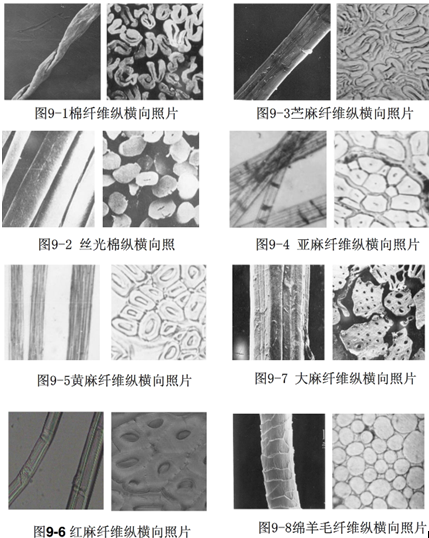Fibers of Textile Materials (5): Identification of Fibers 2
Many people have misunderstandings or understanding of “Fibers of Textile Materials (5): Identification of Fibers 2“. Next, let me take you with me to share and explore with your friends. Knowledge about “Fibers of Textile Materials (5): Identification of Fibers 2“…
3. Microscope viewing method
The diameter of the fiber is very small, but its appearance and cross-sectional morphology are very different. Observing them with a chemical microscope or an electron microscope is a widely adopted identification method. The vertical and horizontal morphological characteristics of commonly used fibers are shown in the table below:
| Fiber | Vertical form | Cross-sectional shape |
| cotton | Natural twist | Round waist, with a middle cavity |
| ramie | Horizontal and vertical lines | Round waist, with a middle cavity and cracks in the cell wall |
| Lax | Horizontal and vertical lines | Polygonal shape, smaller center cavity |
| Jute | Horizontal and vertical lines | Polygonal shape, smaller center cavity |
| marijuana | Horizontal and vertical lines | Irregular circular or polygonal shape, the inner cavity is linear, oval or flat |
| Sheep wool | The scales are mostly ring-shaped or tile-shaped | Approximately round or oval, some with marrow |
| Cashmere | The scales are mostly ring-shaped, with smooth edges, large spacing, and small opening angles | Mostly regular circles |
| Rabbit fur | The scales are mostly in the shape of diagonal strips, with single or multiple rows of hairy pulp | The villi are non-circular and have one central cavity; the coarse hair is waist-round and have multiple central cavities |
| Mulberry silk | Smooth | Irregular triangle |
| tussah silk | Smooth | Flat irregular triangle with pores inside |
| Viscose fiber | Multiple grooves | Zigzag shape, with skin-core structure |
| acetate | 1~2 grooves | Plum blossom shape |
| Polyacrylonitrile fiber | Smooth or 1~2 grooves | Round or dumbbell-shaped |
| Polyester, nylon, polypropylene, etc. | Smooth | circle |
| Spandex | Smooth | Irregular circle or potato shape |
| Laminated fiber | A fiber is composed of two polymers, and its cross-section is sheath-core shape, bilateral shape or island shape, etc. | |
| Hollow fiber | Can be made into single hole, four holes, seven holes or nine holes | |
| Special-shaped fiber | Multiple grooves | Zigzag shape, with skin-core structure |
| acetate | 1~2 grooves | Plum blossom shape |
| Polyacrylonitrile fiber | Smooth or 1~2 grooves | Round or dumbbell-shaped |
| Polyester, nylon, polypropylene, etc. | Smooth | circle |
| Spandex | Smooth | Irregular circle or potato shape |
| Laminated fiber | A fiber is composed of two polymers, and its cross-section is sheath-core shape, bilateral shape or island shape, etc. | |
| Hollow fiber | Can be made into single hole, four holes, seven holes or nine holes | |
| Special-shaped fiber | Can be made into various special-shaped sections, such as triangles, dumbbells, etc. | |

AAASDFWERTEYRHF
Through the above description of “Fibers of Textile Materials (V): Identification of Fibers 2“, you will be familiar with “Fibers of Textile Materials” (5): What is your understanding and thoughts on “Identification of Fibers 2“, or if you are interested in purchasing fabrics, you are welcome to post your comments below the website!
Disclaimer:
Disclaimer: Some of the texts, pictures, audios, and videos of some articles published on this site are from the Internet and do not represent the views of this site. The copyrights belong to the original authors. If you find that the information reproduced on this website infringes upon your rights and interests, please contact us and we will change or delete it as soon as possible.
AAA5″ colspan=”2″>Can be made into various special-shaped sections, such as triangles, dumbbell shapes, etc.

AAASDFWERTEYRHF
Through the above description of “Fibers of Textile Materials (V): Identification of Fibers 2“, you will be familiar with “Fibers of Textile Materials” (5): What is your understanding and thoughts on “Identification of Fibers 2“, or if you are interested in purchasing fabrics, you are welcome to post your comments below the website!
Disclaimer:
Disclaimer: Some of the texts, pictures, audios, and videos of some articles published on this site are from the Internet and do not represent the views of this site. The copyrights belong to the original authors. If you find that the information reproduced on this website infringes upon your rights and interests, please contact us and we will change or delete it as soon as possible.
AA






